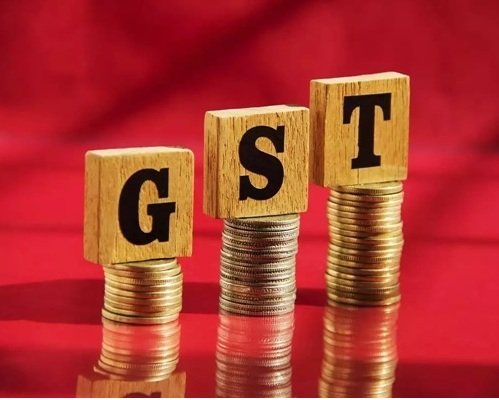Last Updated on August 1, 2025 1:50 pm by BIZNAMA NEWS
R. Suryamurthy
India’s Goods and Services Tax (GST) revenue data for July 2025 may appear stable on the surface, but a closer look reveals troubling undercurrents that demand urgent policy attention. While gross GST collections rose 7.5% year-on-year to ₹1,95,735 crore, this growth is disproportionately fueled by imports, masking a worrying stagnation in domestic consumption and exposing structural inefficiencies in the tax system.
The 7.5% overall rise is largely driven by a 9.7% increase in GST revenue from imports, far outpacing the 6.7% growth in domestic collections. This imbalance raises red flags about India’s internal economic momentum. Aditi Nayar, Chief Economist at ICRA, noted that the subdued growth in domestic revenue—especially muted cess collections—points to weak consumer sentiment and patchy consumption trends.
More concerning is the year-on-year decline in net domestic GST revenue, marking the first contraction since the COVID-19 pandemic. Vivek Jalan of Tax Connect Advisory Services sees this as a clear signal of fragile demand: “This degrowth shows that the consumption sentiment in the country is not very positive.”
This trend is reinforced by fiscal year data (April–July), which shows import revenue growing at a robust 16%, while domestic revenue increased by a more modest 9%. Despite policy emphasis on “Atmanirbhar Bharat” and domestic manufacturing, the numbers tell a different story—India is still leaning heavily on foreign goods for revenue buoyancy.
Refund Surge: Relief or Red Flag?
One of the most striking figures in the July data is the 66.8% jump in total GST refunds, with domestic refunds skyrocketing by 117.6% year-on-year. While this may ease liquidity pressures for businesses, it also hints at deeper structural flaws.
Vivek Jalan attributes much of this to the persistent issue of inverted duty structures—where input taxes are higher than the final product tax. Lithium-ion batteries exemplify this mismatch, taxed at 18% while components face 28%. “The magnitude of refunds shows the urgency of rationalizing GST rates across sectors,” Jalan argues. “The current structure creates inefficiencies, burdens compliance, and slows down working capital flow.”
This is not merely a tax administration issue but a drag on industrial productivity and competitiveness. Businesses spending months reconciling refunds cannot reinvest quickly, stifling growth.
Patchy State-wise Recovery
GST data also lays bare the unevenness of India’s economic recovery. Large economic powerhouses are underperforming: Delhi grew only 2%, Gujarat 3%, Rajasthan 4%, Maharashtra 6%, Karnataka 7%, and Tamil Nadu 8%. These figures are troubling given these states’ substantial contribution to national GDP.
Conversely, smaller and emerging states like Madhya Pradesh (18%), Andhra Pradesh (14%), West Bengal (12%), and Punjab and Haryana (12%) are outperforming. While this offers some hope of economic rebalancing, it also suggests that India’s growth engine is running unevenly—hardly a recipe for sustained national expansion.
States like Manipur (-36%) and Mizoram (-21%) saw outright declines, with other territories including Jharkhand, Chhattisgarh, and Jammu & Kashmir also in the red. This divergence complicates fiscal planning and demands targeted interventions rather than blanket policies.
What Needs to Be Done
India’s GST system, eight years in, stands at a crossroads. The July numbers underline three key priorities for policymakers:
Reignite Domestic Demand: A stimulus targeted at middle-income households and MSMEs—who drive much of India’s consumption—could be critical. Tax breaks, rural employment guarantees, or enhanced public capex may help revive sentiment.
Fix Inverted Duty Structures: GST Council must urgently address rate anomalies that distort industry supply chains. Without rationalization, refund burdens will keep swelling and continue undermining the tax system’s credibility.
Bridge the Interstate Economic Divide: A one-size-fits-all GST regime may no longer be optimal. The Centre could consider performance-based revenue transfers or special packages for underperforming industrial states to ensure more balanced regional growth.
Improve Data Transparency: Disaggregated data on sectoral GST trends would allow for sharper analysis. Currently, policymakers and analysts are forced to read between the lines, which risks misdiagnosis.
The GST data for July 2025 is more than a statistical update—it is a diagnostic scan of India’s economic health. The overreliance on imports for revenue, the strain of rising refunds, and signs of domestic demand weakness point to a system that is holding together, but only just.
The government must treat this as a wake-up call. A course correction is essential—not just to preserve GST’s credibility, but to ensure that India’s growth trajectory remains inclusive, balanced, and resilient.



